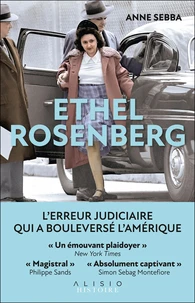'Superb and timely' KATE MOSSE'Impressive, important, deeply moving' SARAH WATERS'Brilliant' ANTHONY HOROWITZWhat role could music play in a death camp? What was the effect on those women who owed their survival to their participation in a Nazi propaganda project? And how did it feel to be forced to provide solace to the perpetrators of a genocide that claimed the lives of their family and friends? In 1943, German SS officers in charge of Auschwitz-Birkenau ordered that an orchestra should be formed among the female prisoners.
Almost fifty women and girls from eleven nations were assembled to play marching music to other inmates - forced labourers who left each morning and returned, exhausted and often broken, at the end of the day - and give weekly concerts for Nazi officers. Individual members were sometimes summoned to give solo performances of an officer's favourite piece of music. It was the only entirely female orchestra in any of the Nazi prison camps and, for almost all of the musicians chosen to take part, being in the orchestra was to save their lives.
In The Women's Orchestra of Auschwitz, award-winning historian Anne Sebba tells their astonishing story with sensitivity and care.
'Superb and timely' KATE MOSSE'Impressive, important, deeply moving' SARAH WATERS'Brilliant' ANTHONY HOROWITZWhat role could music play in a death camp? What was the effect on those women who owed their survival to their participation in a Nazi propaganda project? And how did it feel to be forced to provide solace to the perpetrators of a genocide that claimed the lives of their family and friends? In 1943, German SS officers in charge of Auschwitz-Birkenau ordered that an orchestra should be formed among the female prisoners.
Almost fifty women and girls from eleven nations were assembled to play marching music to other inmates - forced labourers who left each morning and returned, exhausted and often broken, at the end of the day - and give weekly concerts for Nazi officers. Individual members were sometimes summoned to give solo performances of an officer's favourite piece of music. It was the only entirely female orchestra in any of the Nazi prison camps and, for almost all of the musicians chosen to take part, being in the orchestra was to save their lives.
In The Women's Orchestra of Auschwitz, award-winning historian Anne Sebba tells their astonishing story with sensitivity and care.

 , qui est-ce ?
, qui est-ce ?